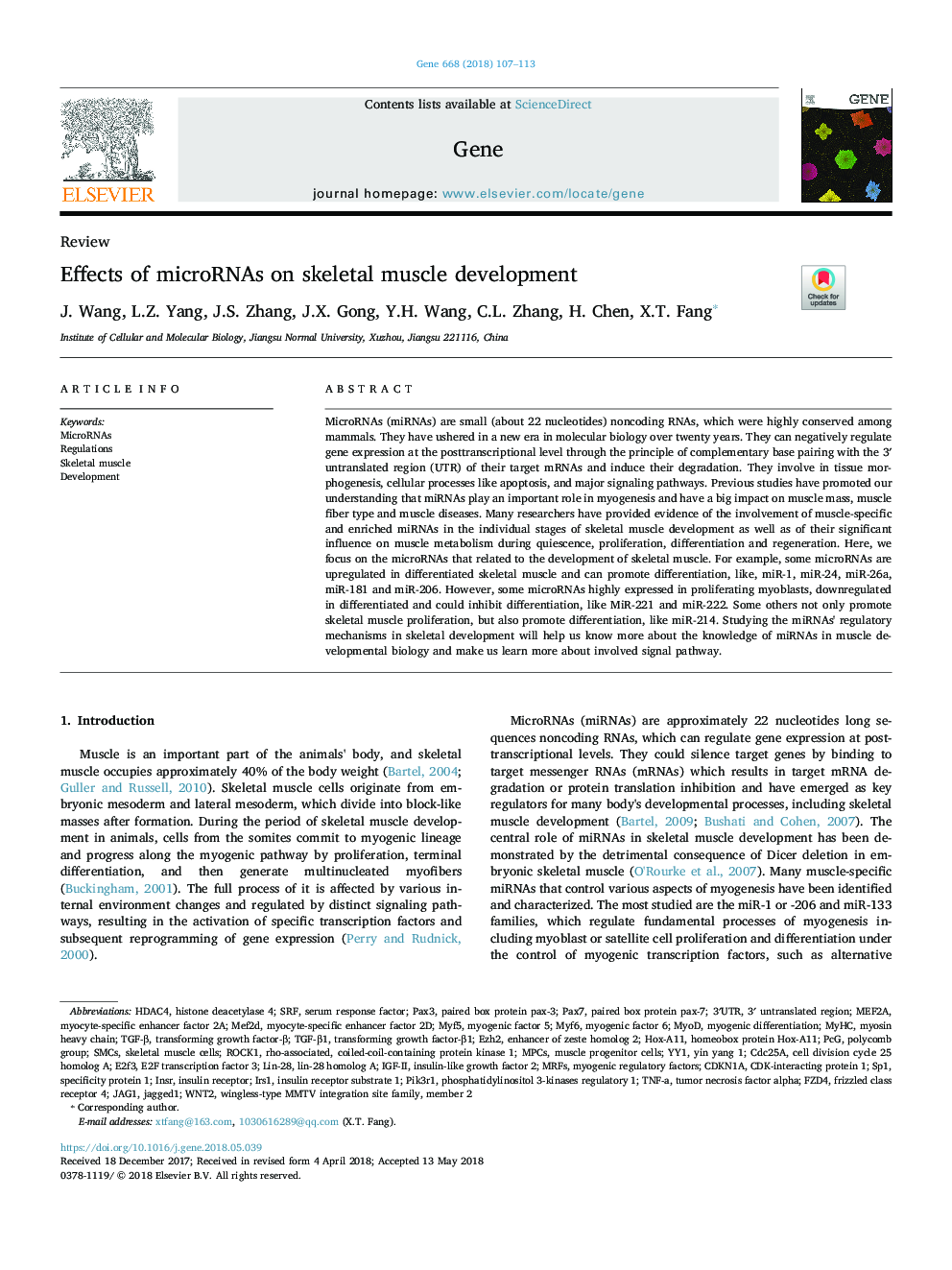| Article ID | Journal | Published Year | Pages | File Type |
|---|---|---|---|---|
| 8644765 | Gene | 2018 | 7 Pages |
Abstract
MicroRNAs (miRNAs) are small (about 22 nucleotides) noncoding RNAs, which were highly conserved among mammals. They have ushered in a new era in molecular biology over twenty years. They can negatively regulate gene expression at the posttranscriptional level through the principle of complementary base pairing with the 3â² untranslated region (UTR) of their target mRNAs and induce their degradation. They involve in tissue morphogenesis, cellular processes like apoptosis, and major signaling pathways. Previous studies have promoted our understanding that miRNAs play an important role in myogenesis and have a big impact on muscle mass, muscle fiber type and muscle diseases. Many researchers have provided evidence of the involvement of muscle-specific and enriched miRNAs in the individual stages of skeletal muscle development as well as of their significant influence on muscle metabolism during quiescence, proliferation, differentiation and regeneration. Here, we focus on the microRNAs that related to the development of skeletal muscle. For example, some microRNAs are upregulated in differentiated skeletal muscle and can promote differentiation, like, miR-1, miR-24, miR-26a, miR-181 and miR-206. However, some microRNAs highly expressed in proliferating myoblasts, downregulated in differentiated and could inhibit differentiation, like MiR-221 and miR-222. Some others not only promote skeletal muscle proliferation, but also promote differentiation, like miR-214. Studying the miRNAs' regulatory mechanisms in skeletal development will help us know more about the knowledge of miRNAs in muscle developmental biology and make us learn more about involved signal pathway.
Keywords
ROCK1EZH2SMCsCDKN1AMyHCIRS1MEF2ACdc25aYY1PIK3R1HDAC4MyoDPax7INSRMyf5Myf6lin-28TGF-βPcGTGF-β1MPcsSRFMEF2DIGF-IIPAX3E2F33′ untranslated region3′UTRMRFsSp1transforming growth factor-βTransforming growth factor-β1enhancer of zeste homolog 2Myogenic differentiationMyosin heavy chaininsulin receptor substrate 1Skeletal muscle cellsMuscle progenitor cellsMyogenic Factor 5Myogenic regulatory factorsinsulin-like growth factor 2serum response factorSpecificity protein 1Histone deacetylase 4polycomb groupinsulin receptorYin Yang 1
Related Topics
Life Sciences
Biochemistry, Genetics and Molecular Biology
Genetics
Authors
J. Wang, L.Z. Yang, J.S. Zhang, J.X. Gong, Y.H. Wang, C.L. Zhang, H. Chen, X.T. Fang,
